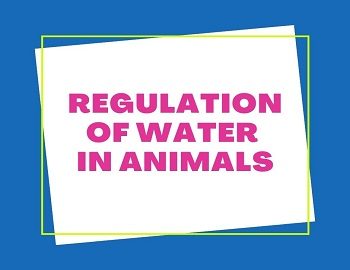Regulation of Water in Animals:
Animals are of different types. According to complexity in body forms, variations are found in water regulatory system in animals. In unicellular animals, metabolic wastes are discharged into surrounding directly from their body surface. But in higher animals, there is a well developed excretory organs. Regulation of water and osmotic concentration in body fluid is called osmoregulation. There are different structures that take part in regulation of water content in body.
- Contractile Vacuoles- Contractile vacuoles are found in protozoans such as Amoeba, Paramecium, Euglena, etc. as a structure of osmoregulation. These vacuoles also eliminate some amount of nitrogenous wastes.
- Flame Cells- In flatworm such as Planaria, flame cells are present as a special excretory structure.
- Nephridia- Nephridia are found in annelids such as earthworm, Nereis, etc.
- Kidney- Kidney consists of about one million nephrons. Each nephron has two major components, a glomerulus (a network of capillaries through which large quantity of fluid is filtered from blood), and long tubules (where a filtered fluid is converted into the urine). The kidney regulates the consistency of water contents in a body with respect to the amount of fluid taken and the amount of fluid lost. The fluid is lost through temperature. Any change in temperature severely affects metabolic reactions.
There are several mechanisms through which the organisms get or lose the heat such as conduction (from any hot material), radiation (from the sun), evaporation (sweet evaporation results in cooling of skin), or metabolism (heat generated through a chemical reaction in a cell).









Comments (No)